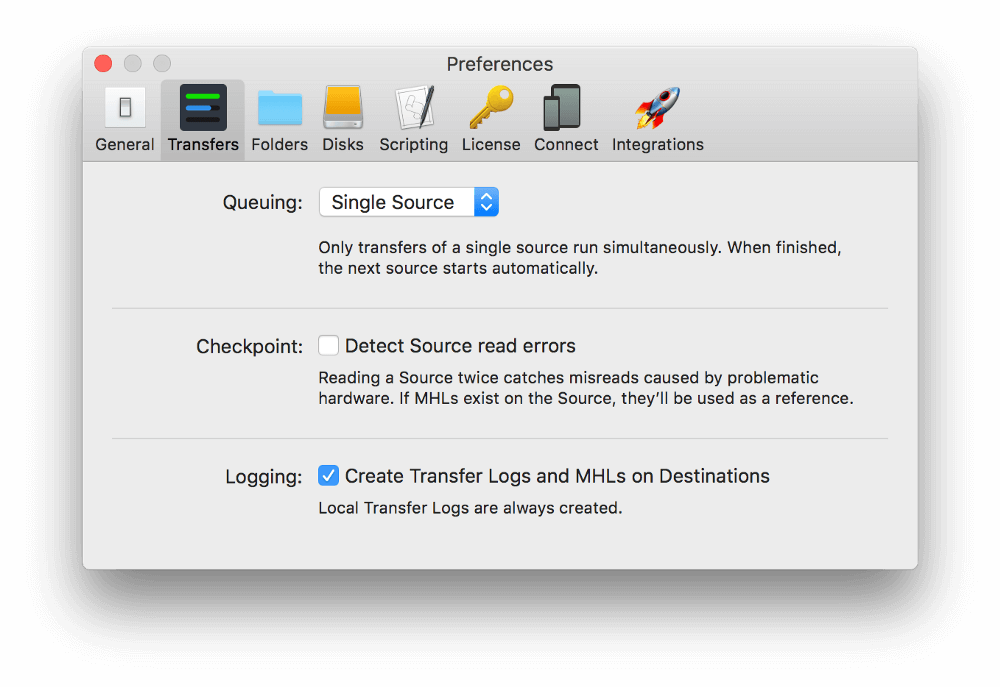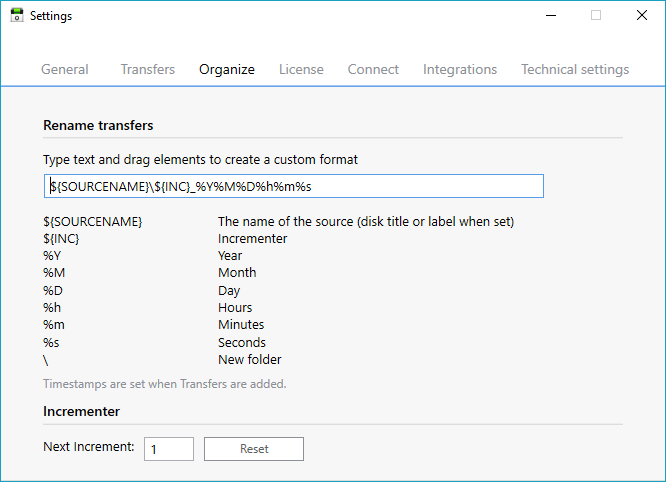Queueing Transfers
Control what goes where, and when.

Since Hedge was introduced back in 2016, Hedge’s “everything goes” concept has been a game changer. Our Fast Lane copy engine was the first to do simultaneous offloading of multiple sources to multiple destinations. Sometimes though, instead of moving everything at once, some sources have priority.
To tackle those situations, Hedge 19.1 introduces Queuing.
On the Mac and on Windows, Hedge now has two ways to control if and when transfers will run together:
- Single Source
- Single Transfer
Single Source
Imagine you have three media cards to back up, and the only thing that matters is to get one back to the camera as soon as you can. It doesn’t matter if the total time to offload all drives will go up — only one source needs to be done, ASAP. Enter Single Source:

Single Source prioritizes sources based on when they’re connected: first in, first out.

Single Transfer
Many teams nowadays use a NAS or SAN to be able to work simultaneously from a single network drive. Copying data to a drive while also streaming video files back to the NLE, can seriously affect the overall performance.

For instance, when consolidating a lot of projects on different drives to a single network destination, the bottleneck will soon become the network cable. With Single Track, you can limit how much data flows to or from your network share by only allowing a single transfer to run:

Single Track is instrumental when you need to migrate lots of independent folders or collections from a single volume to another.
NB: Changing the Queuing settings affects new transfers, not existing ones.
RAW Speed
One very practical example of how useful Queuing can be, is to consider offloading ARRIRAW to two drives. Even when you have two seemingly identical drives, their speeds will differ slightly. Fast Lane used to prefer the fastest destination, and as such the slower one would fall behind a bit, causing some files to require a second read. With Hedge’s new copy engine, these drives will copy synchronously — significantly improving the overall speed.
Checkpoint 2.0
Besides the new Queuing options, we have made significant improvements to Checkpoint, Hedge’s source verification engine. Checkpoint sniffs out issues with hardware and peripherals that usually go undetected by checksum verification. Hedge 19.1 speeds up Checkpoint in multiple ways:
When transferring a source to multiple destinations with Checkpoint enabled, Checkpoint now does a single preread that can be utilized by all transfers. The more destinations you have, the more speed gain you get (1/amount of destinations, to be precise).
ICYMI
We continue to add previously Mac-only features into Hedge for Windows updates, so chances are you missed a few big ones that can help you with your workflow:
- Connect: get notifications when transfers are done.
- Collections: group folders and/or files as a single Source.
- Folder Format: automatically create folder structures based on parameters like timestamps.

- Incrementer: automatically add an integer for each new drive. Useful when offloading many UNTITLED cards, and you don’t want to label each card manually.
Start your updaters
Hedge 19.1 is available as in-app update and as a direct download:
As with each major update, when running Hedge 19.1 for the first time on an offline computer, you will need to go online to re-check your license. This is only required once.
✨ Is your license not eligible for new updates? Renew in-app for just $69.
🆕 Don’t have a Hedge license? Grab one on our site, or through FxFactory.
